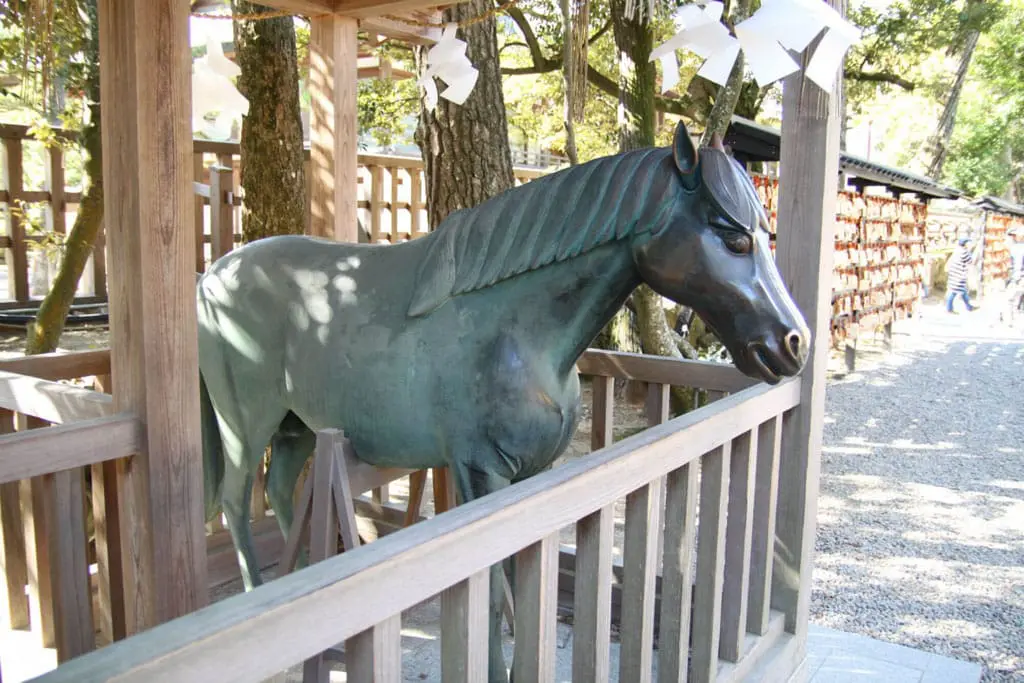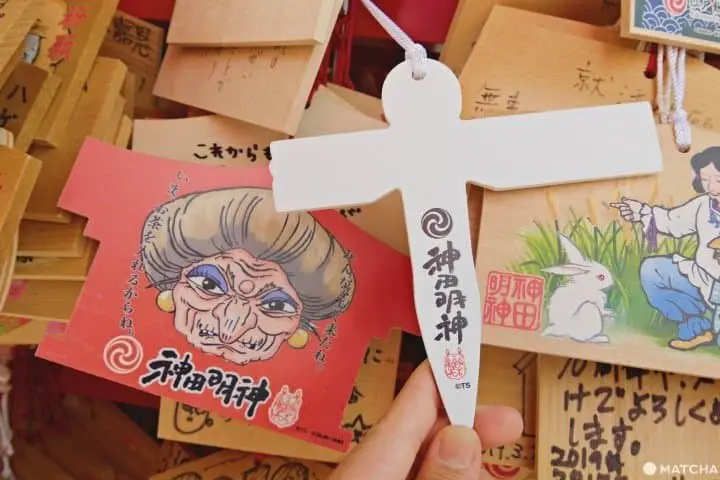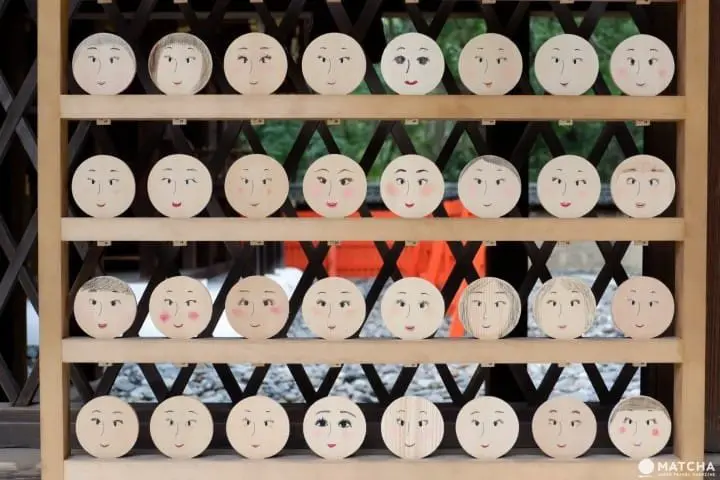Ema And Goriyaku - Japanese Encyclopedia

Ema are wooden plates used to wish for goriyaku - divine blessings - at many of Japan's famous shrines. This article explores the history and traditions behind these unique, symbolic offerings.
Ema ("horse pictures") are wooden plaques used as a hono (act of offering) at shrines and temples to show appreciation. Hono was traditionally given when someone had a wish that was granted through divine grace. Nowadays, ema are used simply to deliver a wish to the heavens.
Until recently, all ema would have a pointy top and bear a picture of a horse. They were most often used by students who make a wish to pass entrance exams.
The Origin of Ema: A Real Horse
The picture of a horse on the ema plaque comes from the historical belief that horses were the sacred animals used by the gods.

In 8th century Japan, nobles started the custom of offering live horses when they made wishes. It was believed that the gods would make the wishes come true as goriyaku ("blessings") in exchange for the offering of horses. However, live horses were a burden not only on worshipers, but also shrines and temples, which had to take care of them afterwards. That's why they started using life-size horse statues made of wood, clay and metal instead.

These eventually became pictures of horses on wooden plates, and finally the much more reasonable and convenient ema.
The illustrated side is the front; on the back, people write their wishes and name or initials. So as not to be greedy, choose just one wish to write on an ema.
Once their wishes have come true, some come back to offer a different type of ema, made just to show appreciation to gods. Others simply express their gratitude through a prayer at the shrine.
Receive Blessings with Unique Ema
Nowadays, you can find ema in different shapes and designs. Instead of pictures of horses, some even have anime characters and unique shapes.

Let's take a look at Kawai Jinja Shrine, located on the grounds of the UNESCO World Heritage Site Shimogamo Jinja Shrine, in Kyoto. Enshrined in the Kawai Shrine is Tamayori Hime, a goddess of women's beauty. These plaques are called mirror ema from their resemblance to a hand mirror.
Eyebrows, eyes, a nose and a mouth are already printed on these ema when you purchase them. Draw a fun face over one and give it as an offering!

Also in Kyoto is Toyokuni Jinja Shrine. Enshrined here is Hideyoshi Toyotomi, who started life as a farmer and ended up the ruler of Japan!
This shrine is known for hyotan ema, thought to be lucky for those who wish to get promoted. They're named for the hyotan gourd, which Hideyoshi is believed to have worn about his waist and raised to the sky to signal his victories.
By writing their wishes down on an ema, people can make their own personal goals more clear. Why not find the perfect ema for your wish?
This is the official account of MATCHA's editorial department. Our articles feature useful travel information for visitors to Japan, from how-to guides to recommended places to visit.


































![[2026] Top 5 Strawberry Picking Spots in Tokushima, Naruto| Farms and Access Guide for January to May](https://resources.matcha-jp.com/resize/720x2000/2025/03/06-227165.webp)



